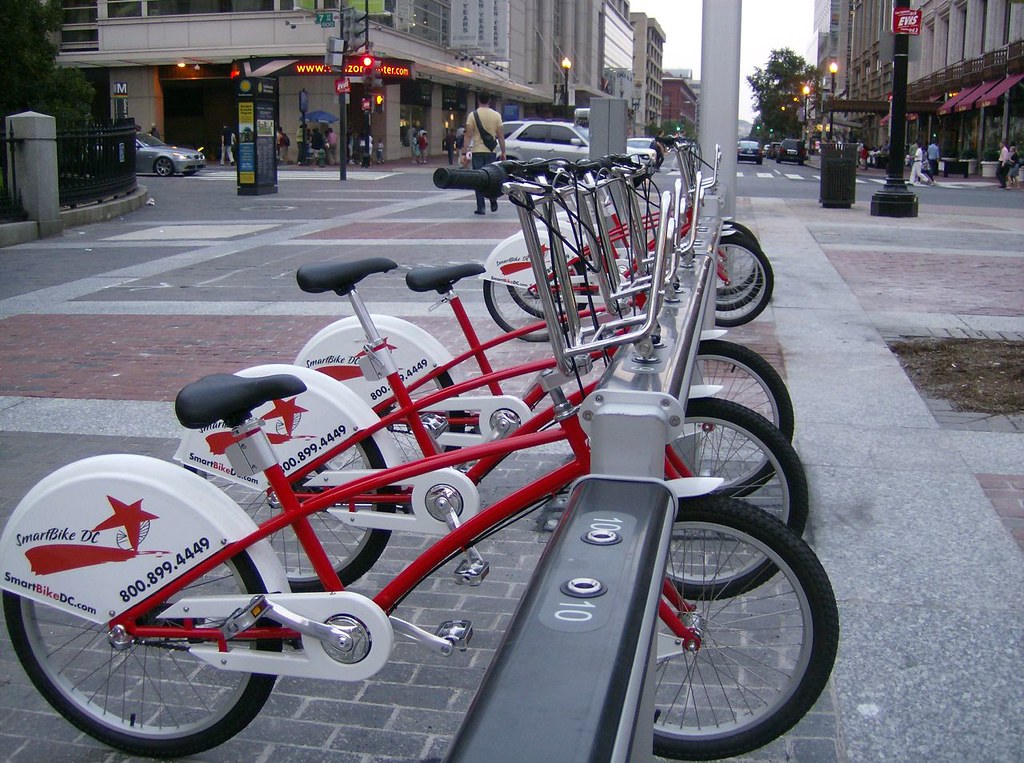
“Bike Share” by *Sally M* is licensed under CC BY-SA 2.0.
Introduction

“Financial statistics and accounting concept” by paola.bazurto4 is licensed under CC BY 2.0.
With technological advances and the transformation of the global economy, the sharing economy has become a major economic paradigm shift. Human beings have survived and thrived because we have excellent cooperation skills. We create and maintain strong communities based on trust and mutual help (John,2016). In this paradigm, owning is no longer seen as the only consumption mode, and borrowing and sharing have become the new norm. As a new mode of travel, shared bicycles provide unprecedented convenience for urban residents. It reflects modern society’s pursuit of environmental protection, health and efficient travel and plays its role in the sharing economy. In this paper, we will delve into how bike-sharing has risen in the context of the sharing economy and analyze the impacts and challenges behind it.
What is Bike Sharing?
The rise of shared bicycles
The rise of shared bicycles has profoundly changed how we travel, providing great convenience for daily commuting and injecting new vitality into the economy. The origins of this innovation can be traced back to Amsterdam on July 28, 1965, when a program called Witte Fietsen or White Bikes was launched. The bikes were painted in striking white and were available for free use by the public to encourage public travel (DeMaio,2009). However, there is often a gap between ideals and reality. Although the program was initially intended for the public good, it quickly encountered challenges. Due to people’s selfish nature, the bikes were often privately occupied and even thrown into the canal, a phenomenon reflected in (John,2016). This situation reveals the conflict between cooperation and selfishness among people in the sharing economy.
In order to solve these problems, in 1996, the University of Portsmouth in the UK launched a new generation bike-sharing program, and students could rent bicycles using magnetic stripe cards (DeMaio,2009). This generation and subsequent bike-sharing systems have adopted many technological innovations, such as electronic locks, telecommunications systems, and smart cards, to make shared bikes more intelligent. This model is very similar to the shared bikes we are familiar with now. it can quickly pay and start riding by simply check the location of the bikes with the user’s phone.
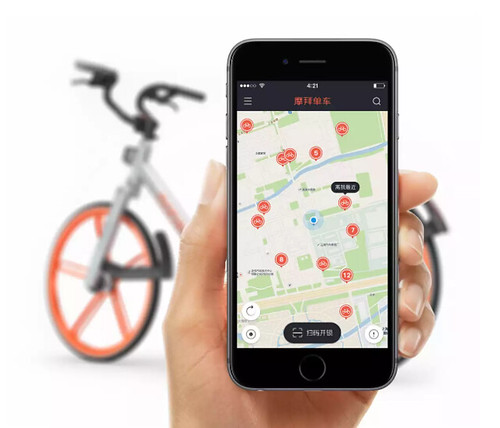
“Mobike app” by sinosplice is licensed under CC BY-NC 2.0.
The Benefit of bike sharing
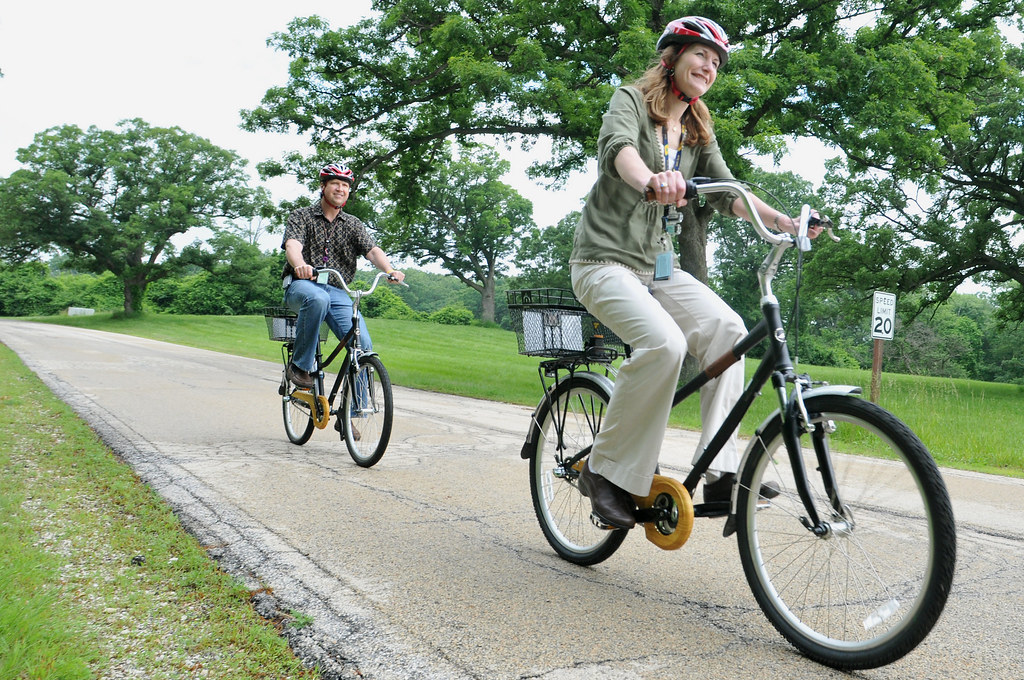
“Argonne Bike Share” by Argonne National Laboratory is licensed under CC BY-NC-SA 2.0.
Bike sharing has become a growing movement in cities worldwide, not only because it provides citizens with a convenient and economical way to travel but also because it directly responds to the current global warming and climate change issues and becomes an effective means to promote green travel. Compared with vehicles that use fuel-powered vehicles, such as cars and motorcycles, bicycles produce no exhaust emissions at all, thus contributing to the improvement of urban air quality. Bike sharing reduces exhaust emissions and encourages people to live a healthy lifestyle.
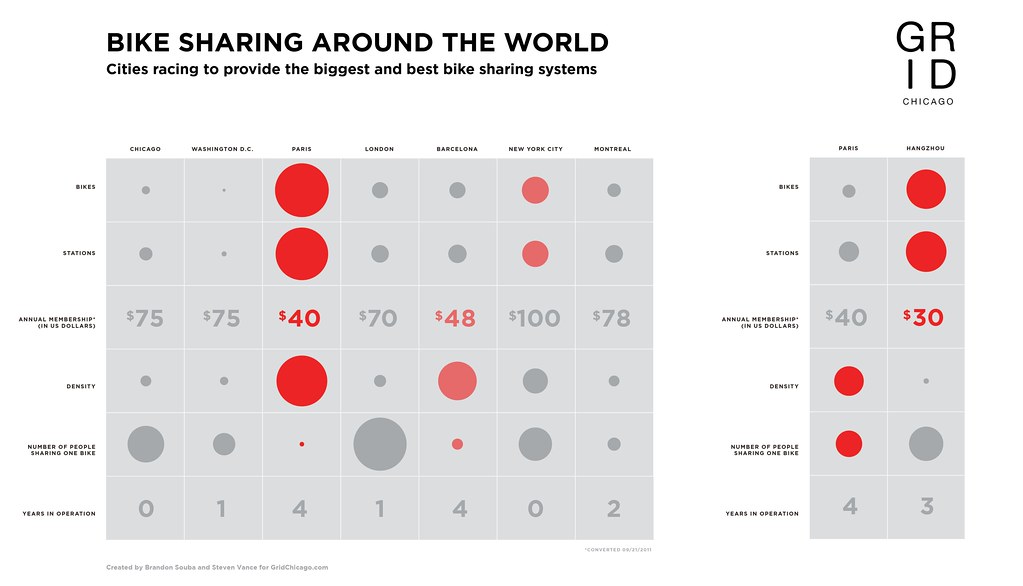
“Bike sharing around the world” by Steven Vance is licensed under CC BY-NC-SA 2.0.
Furthermore, many bike-sharing users have reduced their dependence on cars, buses, and trains due to this convenient way of travel in cities such as Montreal, Toronto, Washington, D.C., and Minneapolis-St. Paul, nearly 46% of bike-share users say they have taken significantly fewer rides since using bike-sharing (Chen et al., 2020). The study revealed significant environmental benefits of bike sharing in New York City (Chen, Zhang, Coffman, & Mi, 2022) the use of shared bikes saved 13,370 tons of oil equivalent and reduced carbon emissions by 30,070 tons. Bike sharing also promotes social connectivity in cities. When people travel by bike, they are more likely to stop and interact with others, and at the same time, bike-sharing sites often become social gathering places.

“Real-time oil consumption – high res still from ‘CCS: a 2 degree solution’ (film)” by Carbon Visuals is licensed under CC BY 2.0.
Therefore, bike sharing provides a green, healthy, and economical way of travel for significant cities worldwide, positively reduces carbon emissions, improves air quality, and promotes social connections in cities.
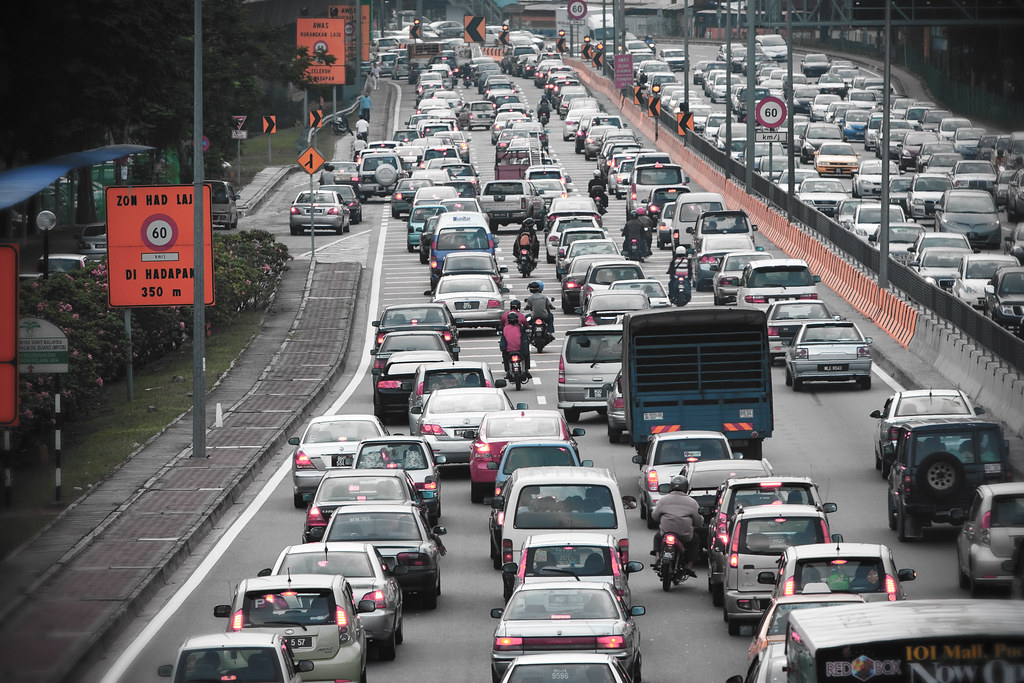
“Traffic ?” by Michael Loke is licensed under CC BY-NC-ND 2.0.
Moreover, in 2017, a report from China noted that bicycle use had grown to 11.6 percent from the original 5.5 percent. Such growth has also had a positive impact on urban transport. For example, traffic congestion in Shenzhen and Guangdong decreased by 6.8 percent and 4.1 percent, respectively. In Beijing, the congestion rate in certain areas has decreased by 7.4% (Yu et al., L. C.)
Issues of Sharing Bike
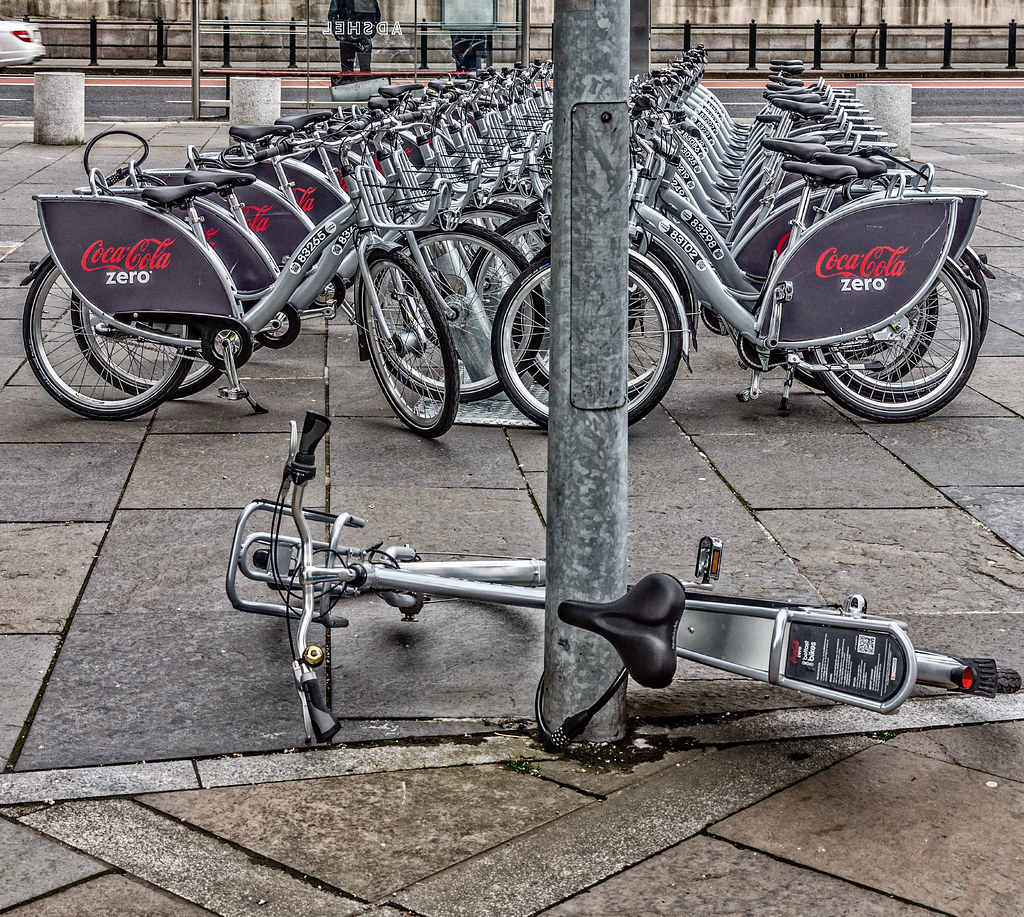
“BELFAST BIKES 36 PERCENT STOLEN OR VANDALISED [MY PHOTOGRAPHS MAY EXPLAIN WHY]-126981” by infomatique is licensed under CC BY-SA 2.0.
Shared bicycles, as a modern means of transport, bring comfort to our lives but also bring a series of social problems. For example, in China, it can often be parked randomly on narrow pavements, obstructing pedestrian traffic, or even placed on public bicycle parking racks, occupying public space. Some already damaged bikes are abandoned, resulting in a waste of resources (Laa et al., G.).
However, this exposes some problems behind the sharing economy, where these behaviors often need to be better thought out and display selfish attitudes (John,2016). According to statistics, by July 2017, 16 million shared bikes were on the market, most concentrated in Tier 1 and Tier 2 cities. This oversaturation of the market may bring about a waste of resources and a series of other problems. In addition, the deposit system of shared bikes has also accumulated a large pool of cash, which may make it difficult for users to get back their deposit if it is not managed well or other problems occur (Yu et al.; L. C., 2017)
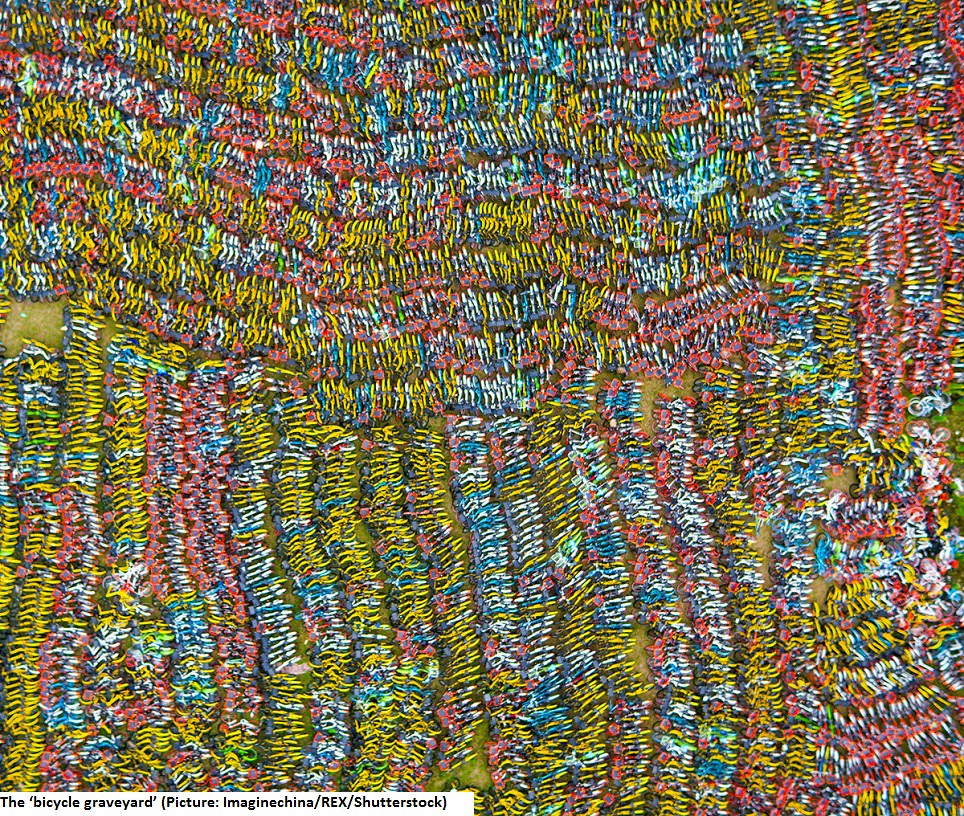
“Bike-sharing graveyard 6” by Sustainable Urbanisation in China is marked with Public Domain Mark 1.0.
How to solve?
While sharing bicycles brings convenience to the economy, they also face unavoidable risks. We can start by solving these problems from the following aspects: First, we should clarify the regulations and management rules. For example, the government should formulate more clear management rules to regulate the placement and parking of shared bicycles. The challenges to the future of bike sharing can be at the level of the sharing economy, which can encourage innovation and cooperation, encourage bike-sharing companies to cooperate with traditional bicycle sales and rental businesses, and jointly explore new business models to reduce the impact on the traditional industry. Bike-sharing companies have a large user base, while traditional bicycle sales and rental businesses have advantages in terms of geography and maintenance. Both sides can combine their respective advantages and cooperate. Furthermore, traditional bike stores can be transformed into repair and maintenance centres or offline experience stores for shared bikes, providing users with test rides and rental services.
Conclusion
In conclusion, the rise of shared bikes in the sharing economy heralds a new era of urban mobility. It provides urban residents an environmentally friendly, convenient and economical short-distance travel option. Its rapid popularity has significantly eased urban congestion and reduced carbon footprints. Bike sharing also brings unforeseen challenges. Public spaces in many cities have become cluttered with randomly parked bicycles, sparking discussions about urban space management and making it difficult for bike sharing to survive in the sharing economy. Traditional bicycle operations face disruption, prompting continuous innovation and management.
References:
BoulderBcycle (2014). What is Bike Sharing? Www.youtube.com. Retrieved October 2, 2023, from https://www.youtube.com/watch?v=XJ87iQ-VKQI&list=PLpOvQndThbl2rwV70wPRWTV7Ug0Yn3RKR&index=2
Chen, J., Zhou, D., Zhao, Y., Wu, B., & Wu, T. (2020). Life cycle carbon dioxide emissions of bike sharing in China: Production, operation, and recycling. Resources, Conservation & Recycling, 162, 105011.
Chen, Y., Zhang, Y., Coffman, D’M., & Mi, Z. (2022). An environmental benefit analysis of bike sharing in New York City. Cities, 121, 103475. Retrievedhttps://www.sciencedirect.com/science/article/pii/S0264275121003747?via%3Dihub=
DeMaio, P. (2009). Bike-sharing: History, Impacts, Models of Provision, and Future. Journal of Public Transportation, 12(4), 41-56.https://doi.org/10.5038/2375-0901.12.4.3
John, N. A. (2016). The age of sharing. Polity Press.John, ProQuest Ebook Central, https://ebookcentral-proquest-com.ezproxy.library.sydney.edu.au/lib/usyd/detail.action?docID=4770940
Laa, B., & Emberger, G. (2020). Bike sharing: Regulatory options for conflicting interests–Case study Vienna. Transport Policy, 98, 148-157.
South China Morning Post (2018). Drone footage shows thousands of bicycles
abandoned in China as bike sharing reaches saturation.Www.youtube.com.
Retrieved October 2, 2023, fromhttps://www.youtube.com/watch?v=Xlms8zEcCg&list=PLpOvQndThbl2rwV70wPRWTV7Ug0Yn3RKR&index=4
Yu, D. S., & Shang, L. C. (2017). Opportunities and challenges faced by share economy: taking sharing bicycle as an example. DEStech Transactions on Environment, Energy and Earth Sciences Icmed, 254-258.